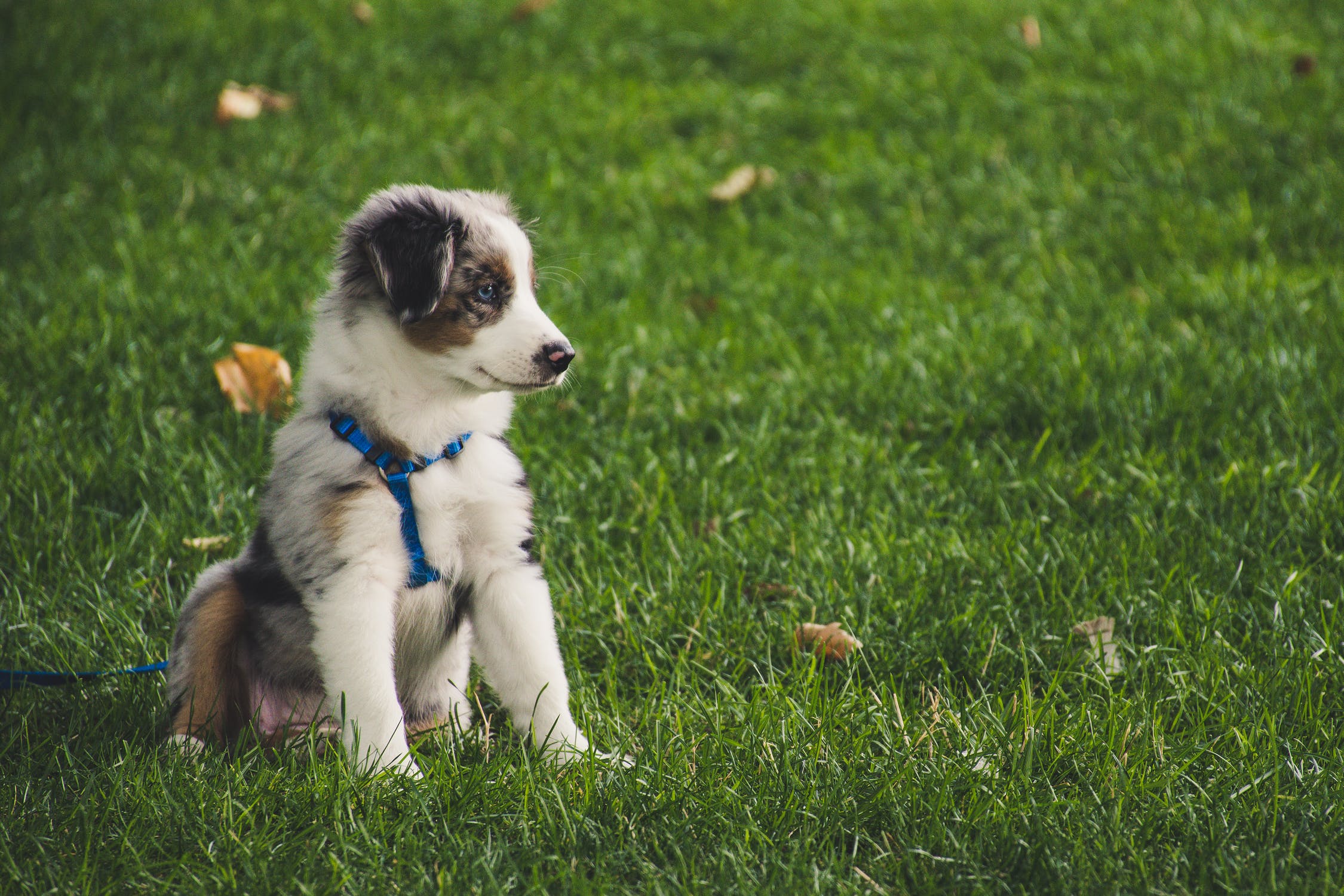
Providing puppies with the opportunity to exercise is a very important aspect of their care. Apart from providing various health benefits, exercising also provides a good opportunity for your puppy to socialise with other friendly puppies, dogs and people too, which is vital for their behavioural development. More information on socialising puppies can be found in this article.
Puppies should have had all their routine puppy vaccinations before going to public places like the park, to reduce their risk of coming into contact with other dogs or an environment that could be a source of infectious disease. Check with your veterinarian when your puppy will be fully vaccinated (the core vaccines for dogs are canine distemper virus, canine adenovirus and canine parvovirus; these are combined within a single vaccine commonly known in Australia as the C3 vaccine. See this article for more details), and can safely go to public places. Before your puppy is fully vaccinated you can take them out but you should carry them and limit their exposure to other dogs and areas where dogs might have been.
Learning to walk on the leash basics:
- Before taking your pup for their first walk, ensure they are comfortable with their collar/harness as this may take a few days. Introduce your puppy to their collar or harness by letting them sniff it and see it. Reward them for allowing the collar or harness to be near them with some tasty food treats. This helps them to associate the collar/harness with positive things.
- When placing a collar of harness on your pup, try this for a few minutes or so to start with and then gradually increase the time span, making sure that each time they are calm and relaxed and always reward with treats and praise so that they continue to associate the collar/harness with positive things.
- The next step is to encourage your pup to walk beside you without the leash (do this in an enclosed area or backyard) by offering treats whenever they are in the right position. Once things are going well, then you can try using the leash, for short periods initially with continuous encouragement for your pup to walk beside you to achieve ‘loose leash’ walking.
- The main thing to remember is that your pup will naturally want to pull to explore their environment but do not pull back, jerk the leash or yell ‘No’ – stand still like a tree if they pull and reward them when they return to walk beside you and the leash ‘loosens’. This way they associate a ‘loose’ leash with rewards and pulling with no reward. Keep offering a reward for them to be beside you and they will soon learn that this is a good place to be.
Walking on the leash:
- Whilst on the leash you should walk your puppy at a walking pace. It is also advisable to take your puppy for short walks only. If your puppy sits down or lies down during their walk it is important to allow them some time to rest and to wait until they choose to start walking again. If they appear too tired to continue on, it is advisable to stop the walk and head home. Always permit some time for sniffing plants, posts, and other things as this is a very important natural behaviour that they need to engage in and really enjoy.
- Avoiding over-exercising and over-exertion is especially important whilst your puppy is growing. Over-exercising puppies can affect bone and muscle development and this is of particular concern in large and giant breed puppies, e.g. Great Danes, Mastiffs etc
- Attending a puppy pre-school that only uses reward based methods will help your puppy learn how to interact in a friendly way with other dogs and puppies they meet when out exercising. It is very important to start classes as soon as you can (talk to your vet about when your puppy can start) to help prevent potential behaviour issues later on. The Australian Veterinary Association advises that puppy preschool properly conducted in a clean environment should not pose a risk to a puppy who is not yet fully vaccinated.
Off the leash (running freely):
- When a puppy is off-leash in a safe enclosed environment such as your backyard or a designated dog park with fences they may be allowed to run freely. In this situation they are generally able to regulate their own pace and the amount of exercise they receive because when they get tired, they can choose to sit down or lie down and rest before getting up again.
- When off the leash, it is important to avoid excessive ball throwing and catching which may over-exercise your pup. It is advisable to also avoid encouraging your puppy to leap into the air (e.g. Frisbee or high ball throwing) as they can land awkwardly risking an injury to their limbs.
You should avoid forced exercise, such as:
- jogging or running with puppies
- frisbee throwing
- excessive ball throwing and catching
- running a puppy alongside a bicycle (In some states such as NSW and South Australia, the RTA road rules state that a bicycle rider must not lead an animal, including by tethering, while the vehicle is moving)
- fast paced walks
- very long walks
- walking on hot days
Dogs should not be exercised immediately before or after eating as this can cause problems such as bloat (which can be fatal), particularly in large and deep-chested dogs such as Great Danes, Saint Bernards, Irish setters, German shepherds, Rottweiler, Doberman pinschers, Weimeraners and Standard Poodles, among others.
Please note that some of the large and giant dog breeds may continue to grow up until about 18-24 months of age.

